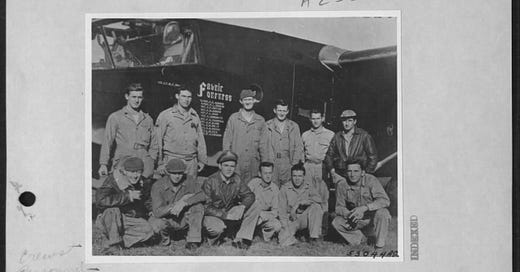The American Glider Mechanics Amazing Rebuild of the German Gotha glider
A testimony to the American Glider Mechanic
In a previous post I discussed the German DFS-230 which was an assault glider of very limited size. On the other end of the spectrum was the German Gotha 242 developed in 1941. A larger but by no means the largest of the German gliders. The Germans recognized the size limitations of the DFS-230 and the need for a larger cargo carrying glider that could deliver heavy trucks, guns and other equipment to the battlefield. The DFS-230 and the Gotha 242 could not have been more different in design. According to James Mrazek in Fighting Gliders of WWII the Gotha was a twin boom mono plane. It weighed 7,000 lbs. empty and could carry 8,000 lbs. of cargo. This was a major improvement over the DFS-230 in terms of cargo carrying capacity. The wingspan was 79 feet and it could carry 23 troops. What remained the same between the DFS-230 and the Gotha 242 was, like all the German gliders, they were both assault gliders. The DFS carried one machine gun while the Gotha carried eight mounted machine guns although according to various sources only a maximum of four were mounted at a given time.
When the Germans withdrew from an airfield in Naples, they sabotaged and burned the Gotha gliders that were housed there rather than letting them fall intact into Allied hands. This was in an effort to keep the technology of the gliders secret. It is important to note that the Americans were new to the field of combat gliders at this point. The Allied forces were not aware of Hitlers use of the glider in Poland or Belgium initially and it was through studying the German past uses of the glider in Poland, Belgium, North Africa and Crete that the Allies developed glider tactics. When the opportunity presented itself as early as 1943 to reconstruct and study the German Gotha Glider it was an opportunity that could not to be missed or squandered.
An article in an old copy of Silent Wings Newsletter explained, in a first hand account, the enormity of the job the American glider mechanics faced. Out of a pile of destroyed gliders the glider mechanics completely rebuilt the Gotha 242. The Germans had burned, slashed, shot and smashed the Gothas, however, in there haste not everything was completely destroyed or could be completely destroyed. Faced with a pile of damaged and destroyed gliders, the glider mechanics combed through remains to reconstruct what it looked like and how it operated. The glider mechanics managed to pull together enough parts to rebuild the frame, the operational controls the fabric and eventually the entire glider. including the markings. What they did not have or could not find in parts they borrowed from other groups or rebuilt themselves.
To provide some perspective on the enormity of the task that lay in front of the mechanics it is important to remember that the American CG-4A itself was made up of 70,000 parts. Working conditions were not always great. They were delayed by weather. Multiple layers of “dope”, a liquid compound applied to the fabric exterior had to dry between coats and the rainy weather react havoc with the applications and drying times. The mechanics were also affected in locating parts or borrowing equipment from other squadrons to reconstruct parts. They were also subject to enemy fire while working. Despite the challenges they faced in a period of a few months, like a Phoenix rising from the ashes, the Gotha 242 was completely restored and was intact down to its coloring. It was tested and deemed flight worthy. The newly reconstructed was flown back to be studied by U.S. aircraft research experts. The tests conducted on it revealed that much of the experts previously researched data on the gliders underestimated the gliders while also revealing new and previously unknown information.
As a side note the Germans also experimented with rockets placed outside the rear of the glider in order add propulsion to the Gotha during takeoff. Also, like the little known United States Navy glider design, the twin boom and high set wings would allow for amphibious landings as well. The Germans experimented with placing propellors and engines in the Gotha just as the Americans did with the CG-4A. Unfortunately the glider has been relegated to the standing of strange diversion in aviation history when in reality it was in fact considered a valuable weapon of war at that time. Recent events serve as testimony to the effectiveness of the element of surprise when Hammas utilized the paraglider to land on the concert grounds in Israel. The footage shows the concert attendees staring and watching the paragliders come in, only registering at the last moment the dange
r they carried with them. Needless to say, the enormity of the feat of the American glider pilot mechanics in reconstructing the Gotha 242 without plans and from a pile of debris cannot be overstated, nor can the Germans ingenuity in war.




